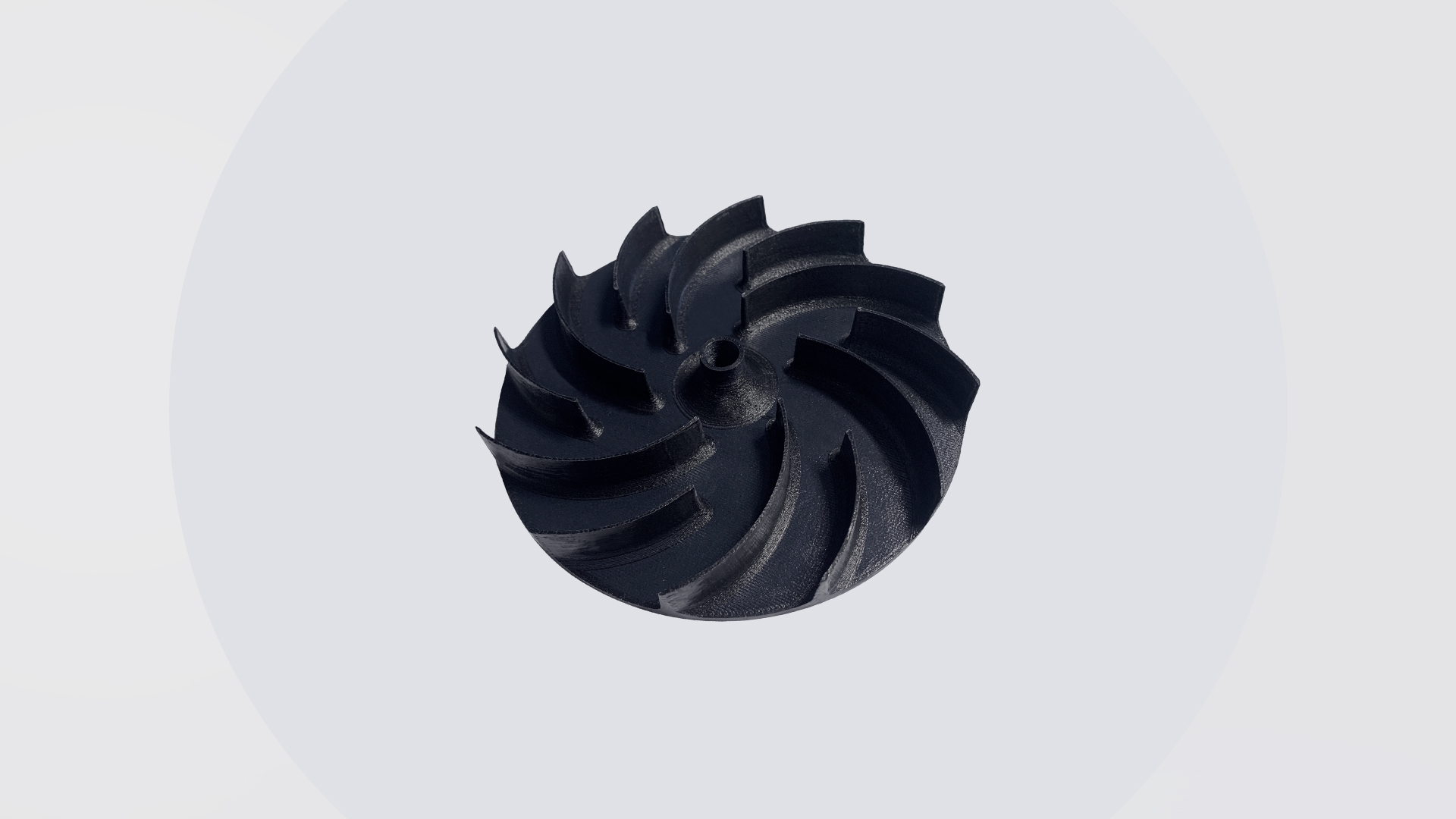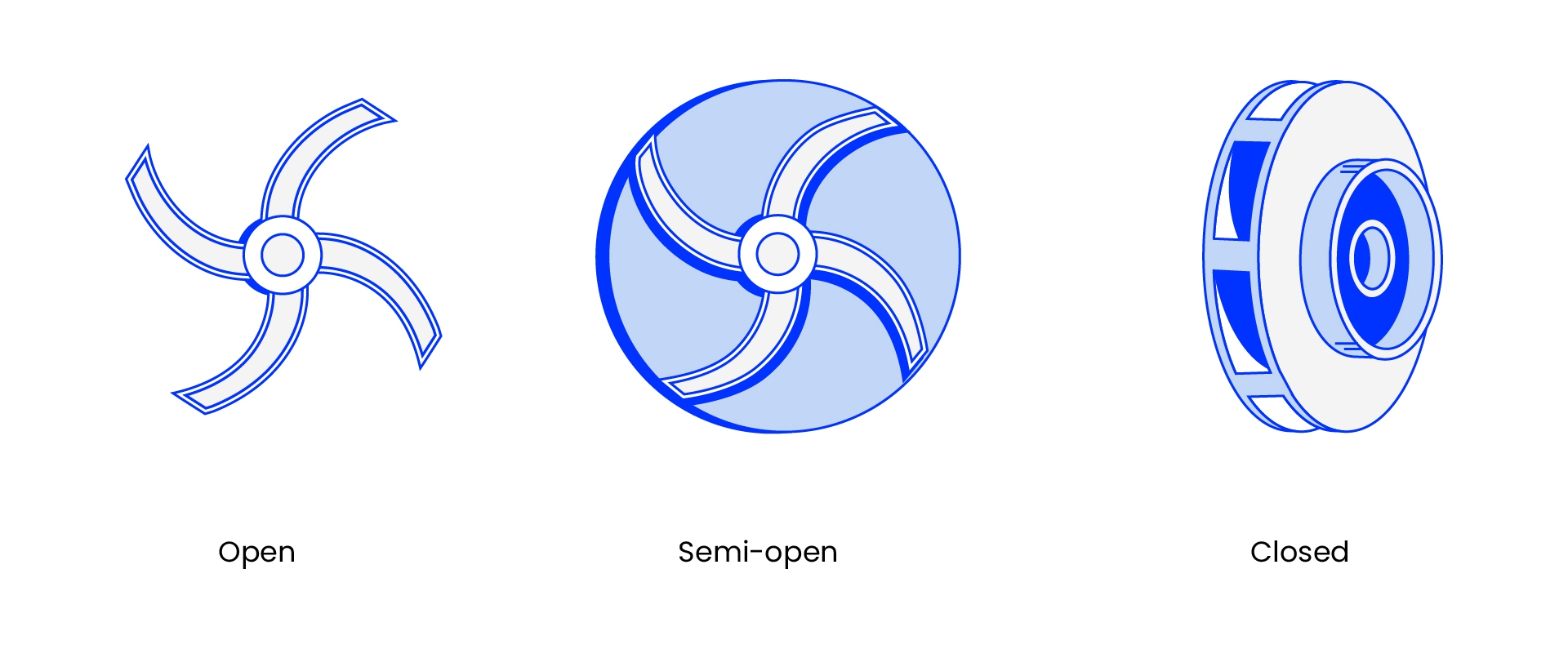
How to optimize the production of impellers with Roboze 3D printing and Carbon PEEK
What is an impeller used for?
Impellers are rotors which are fundamental in the design of a pump and their main purpose is to increase the speed or pressure of a fluid. They are used in a wide range of applications, from chemical production plants to water treatments, and even in rockets.
Pumps are available in many types, shapes and sizes. Among the most common, the radial centrifugal pump, increases the speed of fluid by accelerating it by means of an impeller.
Types of impeller
There are three different types of pump impellers:
- open impeller;
- semi-closed impeller (or semi-open impeller);
- closed impeller.
The first and more common kind is the open impeller consisting of a hub with blades mounted on a shaft. These impellers are typically used with fluids that contain solid particles suspended inside and are the easiest to produce and maintain, allowing for simple cleaning in case of occlusion. In the semi-closed impeller, in which a rear wall (or cover) is added to the open impeller to increase the resistance of the blades and the rotation speed. The closed impeller has two covers that make it more resistant than the semi-closed type. Closed impellers are generally used with fluids without solid particles suspended in large pumps, as they are difficult to clean and maintain.

70% of the impellers in use are the closed type
For what concerns the industrial application of impellers, oil refineries, for example, prefer to adopt a closed design because due to processed products that can be explosive or highly volatile and must remain contained within the impeller. Open and semi-open designs are relatively easy to produce by casting or 5-axis CNC milling. The particular geometry of the closed impellers leads to hidden internal parts that are difficult to work with and to inspect for defect control.
Production of impellers with conventional methods and materials
The impellers are manufactured in a variety of materials, including cast iron, bronze, and low carbon steel. The choice of material depends on the operating conditions for the application: from mechanical loads to temperatures and the kinds of environmental conditions the part must undergo. For example, steel is typically used in the petrochemical industry due to the aggressiveness of the operating environment, the high temperatures involved (up to 250 ° C) and the rotation speeds, all resulting in mechanical stresses.
Potential complications in metal applications
The choice of a metal material to produce an impeller may not be trivial at times, for several reasons:
- some chemicals could lead to corrosion and require excessive maintenance;
- the density of a metal material leads to a very high inertial mass that is not sustainable when the application involves intermittent stresses at high speeds;
- the design of closed impellers is often driven by production capacity rather than fluid dynamics, leading to solutions that are not always efficient.
Finally, imperfections during the welding or casting process can lead to impellers being out of balance, increasing shaft wear, and causing unwanted vibrations.
Roboze 3D printing and materials to replace metals
To solve these limitations, companies can utilize Roboze 3D printing systems specialized in the production of finished and functional parts, thanks to the strong specialization in Metal Replacement and reach a new turning point.
The low density, high temperature resistance, and wide variety of chemicals of materials such as PEEK and Carbon PEEK combined with a flexible manufacturing technology capable of printing complex geometries without hindering the design process, offers tremendous cost advantages and maintenance over time.
Carbon PEEK: exceptional properties for outstanding performances
Carbon PEEK is a high performance thermopolymer composed of PEEK and 10% short carbon fibers. The reinforcement gives the material exceptional mechanical and thermal properties with a tensile strength (UTS) of 140 MPa and a thermal deflection temperature (HDT) of 250 ° C. Combined with PEEK's broad chemical resistance, self-lubricating properties, and intrinsic self-extinguishing characteristics, the material lends itself to working in extremely corrosive environments such as those of the Oil & Gas industry.
Download Carbon PEEK’s datasheet here
The low density of Carbon PEEK leads to molded impellers up to six times lighter than their steel counterparts, with further weight reductions possible thanks to the freedom of design and ability to modify the parts infill. All of this leads to a significant reduction in noise and an increase in efficiency. Furthermore, the possibility of producing the entire impeller in a single process makes it possible to eliminate the assembly phase thus reducing processing times and increasing efficiency with perfectly balanced blades.
Find out how you too can access these and many other benefits of the world's most precise and industrialized 3D printing. Contact us today at info@roboze.com.
